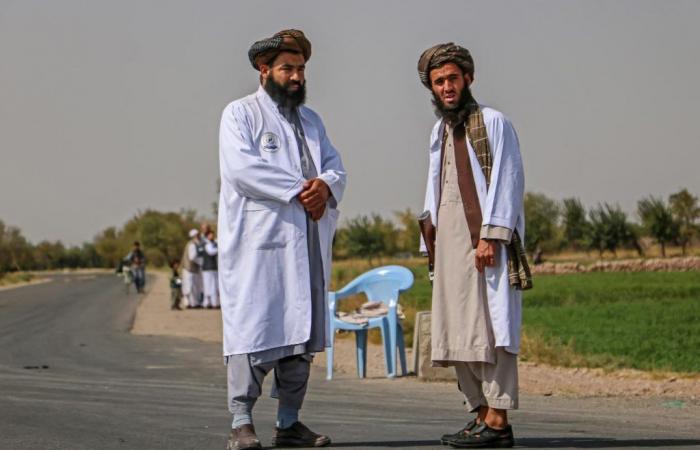The Taliban government of Afghanistan pledged, Monday, October 14, to prohibit the media from publishing images of living beings, adding that journalists in several provinces had been warned of the gradual application of this measure. “The law applies throughout Afghanistan (…) and it will be implemented gradually”Saiful Islam Khyber, spokesperson for the Ministry of Promotion of Virtue and Prevention of Vice, told Agence France-Presse (AFP), arguing that the images of living beings were against Islamic law.
During the summer, the Taliban authorities promulgated a law of thirty-five articles to “promote virtue and prevent vice” among the population, in accordance with Sharia (Islamic law) imposed by them since their return to power in Afghanistan in 2021. “Coercion has no place in law enforcement”declared the PVPV. “It’s just about giving advice and convincing people that these things are really against Sharia law and should be avoided. »
The text contains several measures targeting the media, including a ban on publishing images of living beings, as well as “content hostile to sharia and religion” or who “humiliate Muslims”. However, several aspects of this text have not yet been strictly applied, and the Taliban authorities continue to regularly publish photographs of people on social networks.
“So far, efforts are underway in many provinces to implement the media-related articles of the law, but this has not started in all provinces”said Mr. Khyber. He added that “the work has begun” in the Taliban stronghold of Kandahar (south), and in the provinces of Helmand (southwest) and Takhar (northeast).
Local journalists summoned
Journalists in Kandahar told AFP on Monday that they had not received any statement from the ministry and that they had not, for the moment, been arrested by the morality police for taking photos or videos .
In the central province of Ghazni on Sunday, PVPV officials summoned local journalists and told them that morality police would begin gradually enforcing the law.
They advised image reporting journalists to take photos from further away and film less in order to ” to get used to “told AFP a journalist, who did not wish to give his name for fear of reprisals. At a similar meeting, journalists from the central Wardak province were also informed that this rule would be implemented gradually.
Images of living beings were banned across the country when it was ruled by Taliban authorities between 1996 and 2001, but a similar decree had not yet been imposed on a large scale since their return to power in 2021.
When the Taliban returned, Afghanistan had 8,400 media employees, including 1,700 women. There are only 5,100 left, including 560 women, according to sources within the profession. Dozens of media outlets were closed and Afghanistan went from 122 in three yearse au 178e rank out of 180 in the ranking of the NGO Reporters Without Borders (RSF) for press freedom.
Read also: Article reserved for our subscribers Women’s hope fades in Afghanistan
Add to your selections






